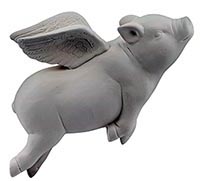Q. Is the phrase ‘China balloon’ grammatically correct?
A. Yes and no, but more no than yes.
The main adjectival form of China in English is Chinese, the first example of which in the Oxford English Dictionary (OED) is dated to the 16th century. This is illustrated by many long-standing expressions such as:
- Chinese boxes
- Chinese checkers
- Chinese hamster
- Chinese lantern
- Chinese whispers
The OED on-line does not even list China as an adjective, although it is found in some set expressions such as ‘China tea’.
Nevertheless, there has been a recent trend to replace traditional adjectival forms of countries by the name of the country itself. I suspect, but do not know for certain, that this reflects an attitude or belief that describing people in terms of their national origin is somehow ‘racist’. Regardless of its origin or justification, this usage appears to be increasing, although I personally consider it to be particularly unfortunate in relation to China.
This is because of the aural ambiguity that arises from the use of the word china (uncapitalized) as a noun for certain ceramics (originally Chinese porcelain) and as an adjective in expressions for paticular porcelain items such as china doll. China ornaments are found in various forms, but a China balloon would, I think, have as much chance of flying as the China pig shown below.
One would expect a china balloon to go down like a lead balloon; which is what literally happened in this case.


